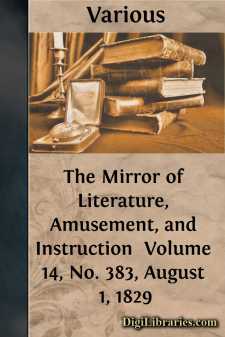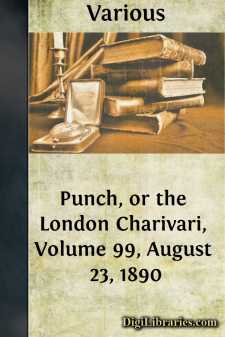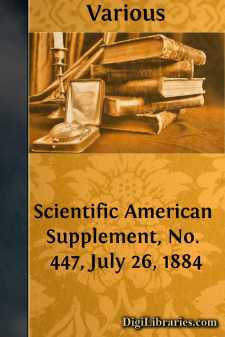Categories
- Antiques & Collectibles 13
- Architecture 36
- Art 48
- Bibles 22
- Biography & Autobiography 816
- Body, Mind & Spirit 145
- Business & Economics 28
- Children's Books 17
- Children's Fiction 14
- Computers 4
- Cooking 94
- Crafts & Hobbies 4
- Drama 346
- Education 58
- Family & Relationships 59
- Fiction 11834
- Foreign Language Study 3
- Games 19
- Gardening 17
- Health & Fitness 34
- History 1378
- House & Home 1
- Humor 147
- Juvenile Fiction 1873
- Juvenile Nonfiction 202
- Language Arts & Disciplines 89
- Law 16
- Literary Collections 686
- Literary Criticism 179
- Mathematics 13
- Medical 41
- Music 40
- Nature 179
- Non-Classifiable 1768
- Performing Arts 7
- Periodicals 1453
- Philosophy 66
- Photography 2
- Poetry 897
- Political Science 203
- Psychology 45
- Reference 154
- Religion 516
- Science 126
- Self-Help 85
- Social Science 82
- Sports & Recreation 34
- Study Aids 3
- Technology & Engineering 59
- Transportation 23
- Travel 463
- True Crime 29
Our website is made possible by displaying online advertisements to our visitors.
Please consider supporting us by disabling your ad blocker.
The Mirror of Literature, Amusement, and Instruction Volume 14, No. 383, August 1, 1829
by: Various
Categories:
Description:
Excerpt
TUNBRIDGE WELLS.
With sketches of Dr. Johnson, Cibber, Garrick, Lyttleton, Richardson, &c. &c. For Explanation, see the annexed page.
References to the Characters in the Engraving.
1. Dr. Johnson.—2. Bishop of Salisbury (Dr. Gilbert.)—3. Lord Harcourt.—4. Cotley Cibber.—5. Mr. Garrick.—6. Mrs. Frasi, the singer.—7. Mr. Nash.—8. Miss Chudleigh (Duchess of Kingston.)—9. Mr. Pitt (Earl of Chatham.)—10. A. Onslow, Esq. (the Speaker.)—11. Lord Powis.—12. Duchess of Norfolk.—13. Miss Peggy Banks—14. Lady Lincoln—15. Mr. (afterwards Lord) Lyttleton.—16. The Baron (a German gamester.)—17. Samuel Richardson.—18. Mrs. Onslow.—20. Mrs. Johnson (the Doctor's wife.)—21. Mr. Whiston—22. Loggan, the artist.—23. Woman of the Wells.
Tunbridge, or as old folks still call it, "the Wells," was a gay, anecdotical resort of the last century, and about as different from the fashionable haunts of the present, as St. James's is to Russel Square, or an old English mansion to the egg-shell architecture of yesterday. In its best days, it was second only to Bath, and little did its belles and beaux dream of the fishified village of Brighthelmstone, in the adjoining county, spreading to a city, and being docked of its syllabic proportions to the Brighton of ears polite.
The annexed Engraving represents Tunbridge Wells about 80 years ago, or in the year 1748. It is copied from a drawing which belonged to Samuel Richardson, the novelist, and was found among his papers at his death in 1761. The original is in the possession of Sir Richard Phillips, who published Richardson's Correspondence, in 1804; it contains portrait figures of all the celebrated characters who were at Tunbridge Wells, in August, 1748, at which time Richardson was likewise there, and beneath the drawing is the above key, or the names of the characters, in the hand-writing of the novelist.
But the pleasantest illustration that we can supply is the following extract from one of Richardson's Letters to Miss Westcomb, which represents the gaiety and flirtation of the place in very attractive colours. At this time Richardson was at Tunbridge Wells for the benefit of his health; but he says, "I had rather be in a desert, than in a place so public and so giddy, if I may call the place so from its frequenters. But these waters were almost the only thing in medicine that I had not tried; and, as my disorder seemed to increase, I was willing to try them. Hitherto, I must own, without effect is the trial. But people here, who slide in upon me, as I traverse the outermost edges of the walks, that I may stand in nobody's way, nor have my dizziness increased by the swimming triflers, tell me I shall not give them fair play under a month or six weeks; and that I ought neither to read nor write; yet I have all my town concerns upon me here, sent me every post and coach, and cannot help it. Here are great numbers of people got together. A very full season, and more coming every day—Great comfort to me."
"What if I could inform you, that among scores of belles, flatterers, triflers, who swim along these walks, self-satisfied and pleased, and looking defiances to men (and to modesty, I had like to have said; for bashfulness seems to be considered as want of breeding in all I see here); a pretty woman is as rare as a black swan; and when one such starts up, she is nicknamed a Beauty, and old fellows and young fellows are set a-spinning after her."
"Miss Banks (Miss Peggy Banks) was the belle when I came first down—yet she had been so many seasons here, that she obtained but a faint and languid attention; so that the smarts began to put her down in their list of had-beens....












